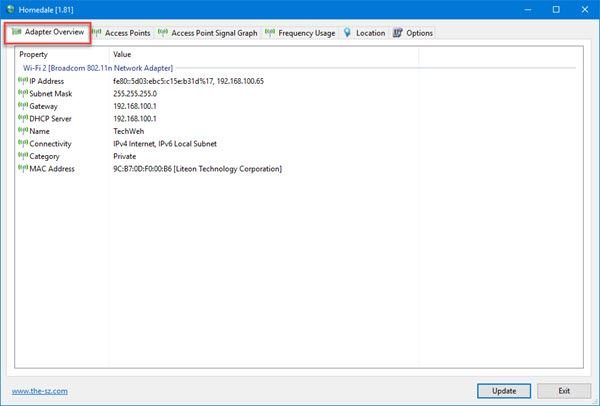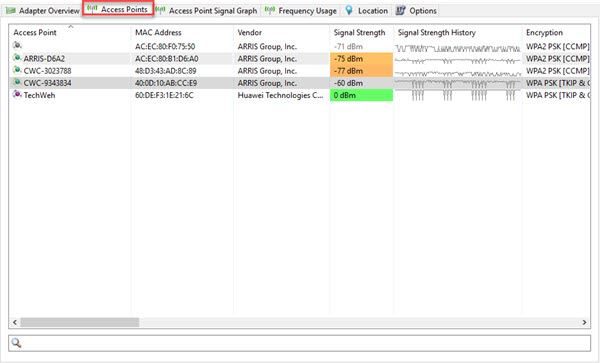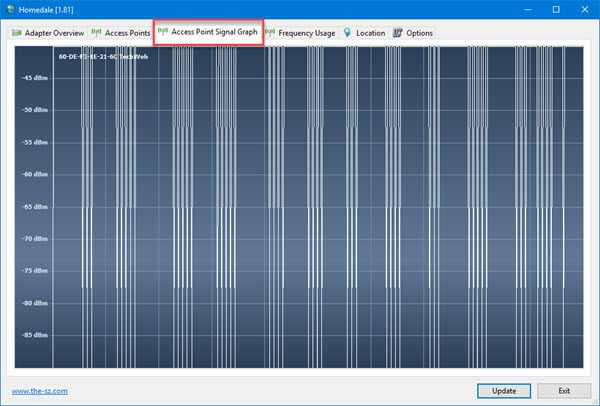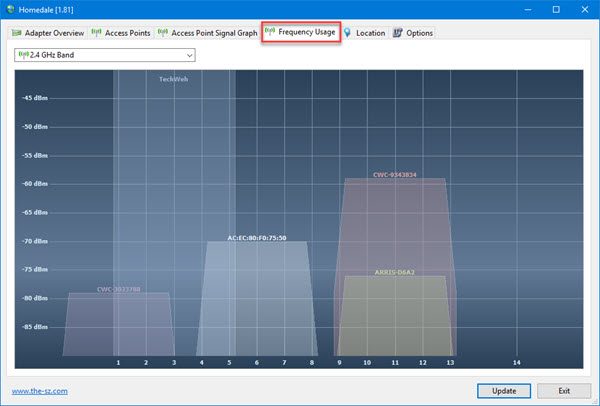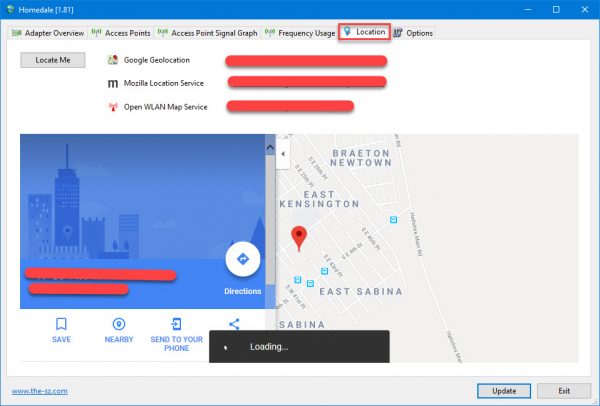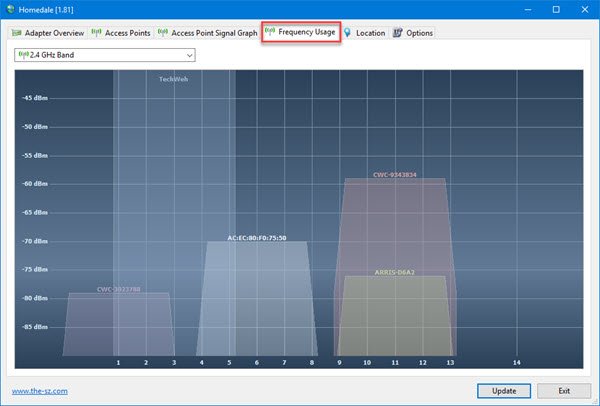The user interface isn’t easy on the eyes, though when it comes down to locating the options you want, it won’t take forever to get things done. Also, it runs very smoothly, and we expect this to be the case on even the slowest computers.
Measure Wi-Fi signal strength
Homedale offers the following tabs:
Adapter Overview
If you want to learn the name of your WLAN adapter, we suggest clicking on the Adapter Overview tab from within the app. Not only will it show the name of the adapter, but your IP Address, Subnet Mask, MAC Address, and a lot more. From our point of view, these are things you should know, so don’t simply look it over. Read: How to find out the exact Wi-Fi signal strength.
Access Points
Here you’ll get to see all the Wi-Fi networks your WLAN adapter has picked up, including yours. The data will show the name of the access points, the vendor, the signal strength, the encryption method in use, and the hardware’s MAC Address. This is more information that we anticipated before downloading Homedale. It’s quite scary that folks who are using this tool can gain information on your MAC Address without ever having to directly connect to the network. Now, if you use the mouse to scroll further to the right, you’ll see even more information and data about the frequency, bitrates, and more.
Access Point Signal Graph
Users who want to know more about their signal strength via a graph can take advantage of this feature. If you want to save an image of the graph, just right-click on it and select Save Picture.
Frequency Usage
This option is very useful if you want to get the best out of your Wi-Fi network. Here’s the thing; if there are many Wi-Fi networks within your vicinity, then you should attempt to never have your Wireless Router on the same Channel as the others. If all the Channels are bogged up, use this feature to see which Channel is frequently used and do your best to avoid it. We like the fact that Homedale shows an animated graph to give users an idea of what’s going on. A very useful aspect of this tool. Read: Fix Low Wi-Fi signal strength on Windows 10.
Location
Do you want to know your location? We do not see the point of this, but if it’s something you want to divulge it, well, it’s accurate. Simply click on the button that says Locate Me, and make sure you’re connected to the internet. The app will then use Google Geolocation, Mozilla Location Service, and Open WLAN Map Service to deliver a relatively accurate location of your Wi-Fi. The system will also show a map within Homedale, but if you want to view your location in the web browser, click on any of the links seen in the picture. All-in-all, we have to say that Homedale is more than we had originally expected, and that’s great. So far, it’s best we’ve tested, and we hope the developers continue to improve the service in the months to come. Download Homedale from the official website. Read next: Increase WiFi Speed and Signal strength and coverage area.
